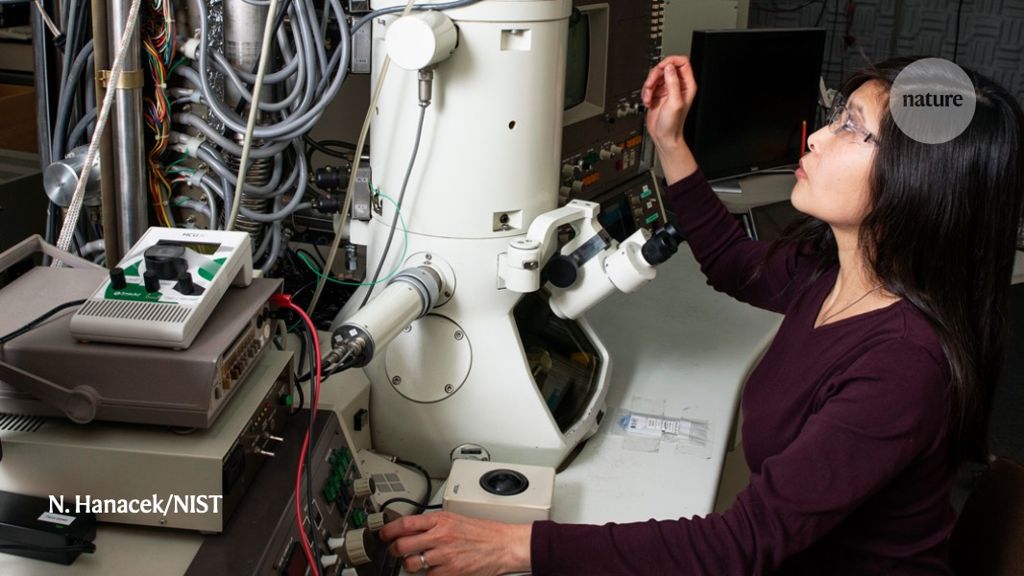A souped-up transmission electron microscope, operated here by June Lau, can capture the rapid movements of atomic-scale objects. Credit: N. Hanacek/NIST
Atomic and molecular physics
A 25-year-old electron microscope can make films of events lasting just trillionths of a second, thanks to a simple retrofit.
Transmission electron microscopes (TEMs) are standard kit for imaging atomic-scale objects such as viruses and nanoparticles. To form an image, a TEM sends a steady stream of electrons to a sample, which must stay still for at least a few seconds. If the sample moves, the picture blurs.
To record films instead, June Lau at the US National Institute of Standards and Technology in Gaithersburg, Maryland, and her colleagues designed a mechanism that breaks the steady stream, generating pulses of electrons. The researchers used a TEM equipped with their upgrade to capture how microwave radiation passes through two tiny combs, which are components in miniaturized devices. The event took only 30 trillionths of a second.
The upgraded instrument can observe events lasting between 25 billionths and 10 trillionths of a second, and can still be used normally as well. New TEMs paired with lasers can also record movies, but the researchers hope this laser-free upgrade will allow laboratories with existing electron microscopes to study ultrafast, atomic-scale events.

